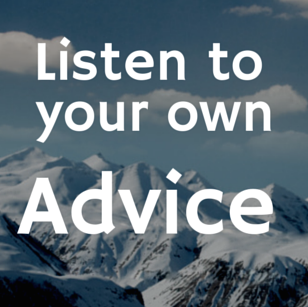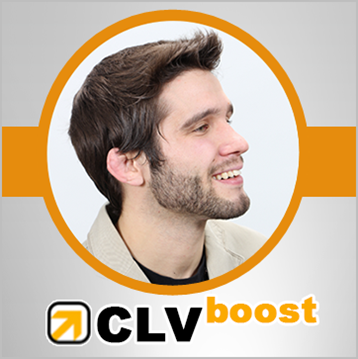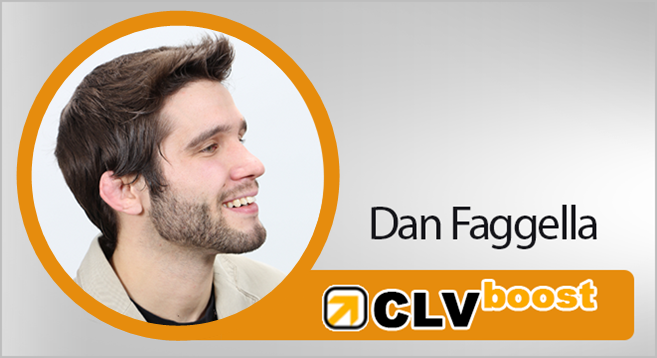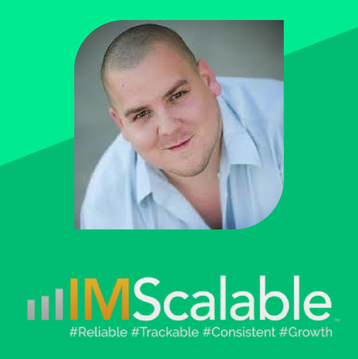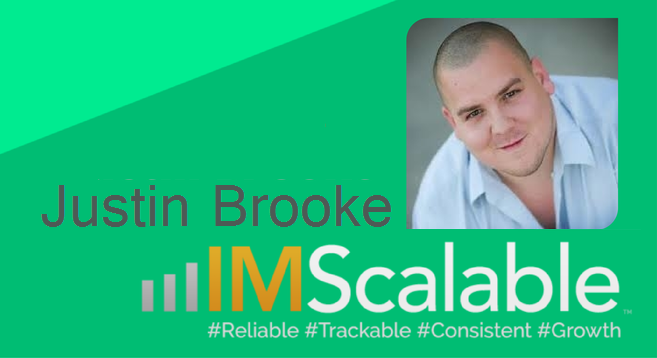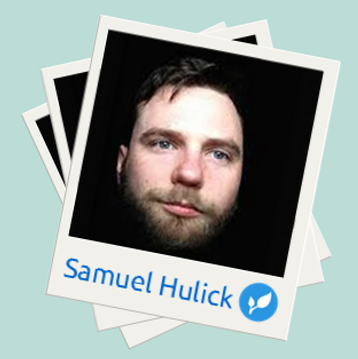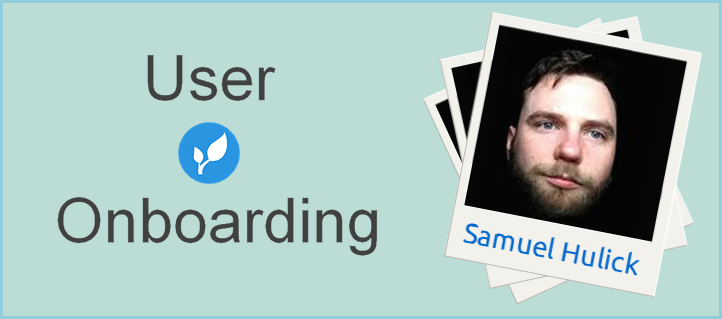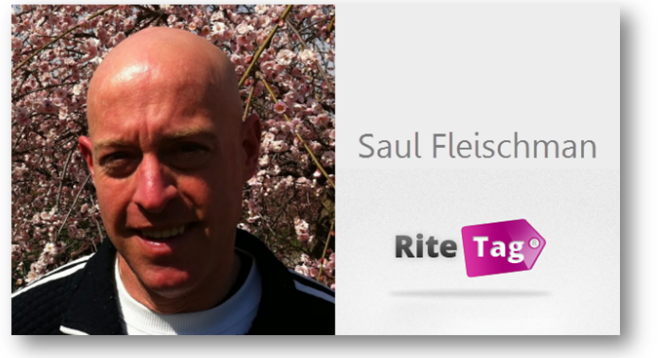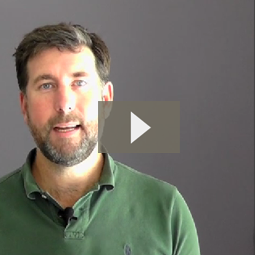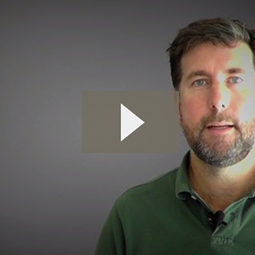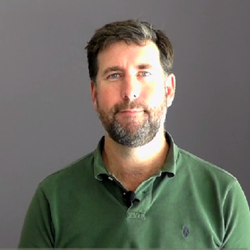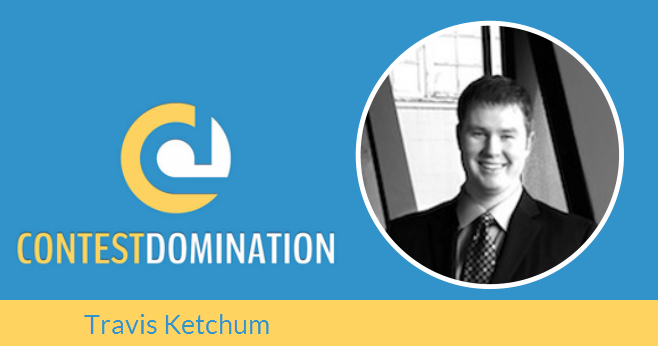
Travis Ketchum is the CEO of Big Give Media LLC. He is also the founder of Contest Domination and The College Startup. Contest Domination is a SaaS based contest platform that is designed specifically to help maximize list building. Travis is passionate about giving his customers the very best and goes the extra mile to do this.
Tweetables
Today's Podcast Highlights
[03.51 - It was sort of like the case of the shoemaker's kids have no shoes.]
[04.45 - A lot of the platforms out there at the time weren't focused on contests for the sole purpose of list-building.]
[05.21 - People are still looking at contests for that sort of explosive growth.]
[05.41 - We were able to take what was, in reality, a very, very simple WordPress plugin at the time and do quite well with it.]
[06.36 - As a business owner you want to throw gas on the fire.]
[06.45 - When we originally launched, the first step was actually just testing the product myself.]
[07.04 - After I got that sort of minimal viable product built, I ran my own campaigns, and it worked.]
[09.00 - We were simply at the time just a ClickBank product.]
[09.33 - It was stretching beyond my means, but I knew that Contest Domination definitely had legs.]
[10.22 - Once we did the proper launch that was probably the quickest I had ever made that kind of money.]
[10.49 - I saw there was traction and I was getting tons of fantastic feedback from users.]
[11.25 - I sought out a business partner that could handle a SaaS type development environment.]
[12.31 - As a SaaS we knew we would alleviate a lot of the support -- we get less support tickets now.]
[12.54 - People were willing to pay not only more for the product, but they were willing to pay a recurring cost for continued access.]
[13.13 - We wanted to build a genuinely better product, have lower support overhead and generate more revenue in general, plus more revenue per customer.]
[14.50 - We work with brands that have brought in over 100,000 leads with a single campaign.]
[15.36 - They are willing to pay 10 to 15 to 20 times more than a WordPress plugin to get this sort of managed, white glove experience.]
[17.45 - It's sort of like that funny adage about the people who pay you less money are actually more work.]
[17.57 - We went from $40 to $60 average cart, I think it was like $42, average lifetime value. Now we're into the thousands per customer for an LTV.]
[18.14 - The recurring angle and limited amount of churn make all the difference for when you're trying to acquire customers.]
[19.02 - Our average customer value is way up. All the metrics are way up, and our overhead is actually down.]
[19.37 - We actually have a free, no credit card required trial.]
[20.43 - We used to just have a free account in general. That was sort of a nightmare, actually.]
[21.26 - For someone who is used to a trickle of leads, getting 100, 300, 600 leads in a few days is a big deal.]
[21.56 - Giving people that sort of unfettered access at the beginning without a credit card ultimately results in double the amount of revenue over time.]
[23.04 - One thing that we did add that made a huge impact was adding little tutorial videos on each and every little step.]
[23.40 - Essentially, baked-in training that's correlated to the feature they're working on in the contest has made a dramatic difference in helping people guide themselves through the process.]
[24.41 - If someone stalls out, we can actually apply additional tags to change their communication.]
[25.20 - With the freemium model people would come in and use the product, but the conversion rates compared to today were pretty atrocious.]
[26.15 - In reality people are either buyers or non-buyers.]
[26.19 - You do a free trial, not only do you sort of force them to make a decision, but you also get a different kind of feedback.]
[28.51 - When customers walk in the door, they are there to evaluate and make a decision. Your goal is just to nurture that decision as quickly as possible. ]
[29.04 - If someone sets up an account, they did it because they're in an evaluation stage and it's your job to help them evaluate as quickly as possible and to choose you.]
[30.24 - Customers walk in the door because they're in the stage of consideration.]
[31.39 - The upsell makes a dramatic difference on everything in every aspect of your business.]
[33.13 - If someone's here, they're interested. You just have to answer their questions and show them the benefits.]
[34.25 - The code base for Contest Domination today is one hundred percent different than the code base of the WordPress plugin.]
[35.40 - We added in extra database services to compress and cache data so that we can load our sites as quickly as possible.]
[36.08 - We find that for every new feature that we do ship or build, seventeen more seem to pop up.]
[36.42 - We're always shipping something, we ship things several times a week, new code iterations.]
[38.32 - We sort of see three different categories of customer types, and so we're going to pursue each of those to the best of our ability.]
[39.25 - The needs of the large companies are very aligned with the needs of the smaller companies.]
[40.20 - We will continue to grow the contest market, but we think there's some complementary things that we can build on the same platform.]
[41.09 - We did a whole bunch of changes all at once, which is typically a no-no, but it made a dramatic difference.]
[41.26 - We have our trial accounts and you have the option to buy a solo credit.]
[42.20 - Most people get plenty of leads to make that value well worth it.]
[42.36 - People who are wanting to run several contests a year, it quickly becomes financially solvent to buy the annual subscription as opposed to the one-offs.]
[43.13 - Any time you give someone money, there's some pain involved.]
[44.04 - By name changing and switching to annual or pay-as-you-go, it's made a dramatic difference both in terms of conversion, customer success and just sort of clarity in our marketing.]
[45.20 - I do something that most people in my position don't do, and they actually tell me not to do it, but I don't listen to them, which is I actually respond to a ton of support tickets. ]
[46.10 - By being in the trenches literally every single day it gives me the direct pulse on what people are thinking, what their challenges are.]
[46.16 - People are pretty vocal, they'll tell you what their pain points are. They'll tell you what their sticking points are.]
[49.24 - They can either go build their dream, or they can be hired to make someone else's.]
Disruptware is building the largest community of software entrepreneurs on the planet. Make sure you are on the list.


Full Transcript
Paul: Hi, everybody and welcome to the show. On today's show we’re going to talk to Travis Ketchum, who is the founder of a company called Contest Domination. And Contest Domination is a SaaS app that enables you to create contests on your website to get thousands of leads. It's a great technique. It was really popular a couple of years ago. There was a lot of buzz around it. And it looks like Travis has really taken this concept. He created a product, like a WordPress plugin, launched it, did really, really well, and he thought, "Right, let's turn this into a long-term, sustainable SaaS business." And that's exactly what he has done.
And, so, I spoke to him earlier. He's doing multiple, multiple six figures a year and scaling really, really nicely, attracting some excellent corporate clients. So, let's get him on the show and learn some insights of how he's building and growing his SaaS company.
Paul: Hey, Travis, welcome to the show.
Travis: Hey, thanks for having me on.
Paul: You're welcome. You're welcome. Thanks for spending some time with us today.
Travis: Of course.
Paul: Really excited to talk to you – I've kind of known about you for some time. And I think we've probably tried to connect some times over Facebook, mainly because we're both in the marketing software world. And so I'm always interested in reaching out to people like yourself. And your product, Contest Domination, has been a market leader for some time. So I really wanted to get you on and talk to you a bit about your experience with taking a product and turning it into a SaaS and growing it as a very successful business. So, thanks for that.
Travis: Yeah, I'm glad we finally connected. It's been a long time coming, I think.
Paul: Absolutely. So, just tell me a bit – so, what gave you the idea to start this product?
Travis: Sure, well, it was kind of two things, really. One was at the time, when I sort of got the idea to do it, I was doing work for best-selling authors and speakers. I was doing a bunch of client work for them, so I was managing their JV and affiliate programs. I was doing user acquisition for media buying on LinkedIn, and things of that nature. I had come out of a previous, you know, 9 to 5 type of job – actually, more like 6:30 am to 3. So, I had been doing this work for these authors and speakers to help grow their audience, but it was sort of like the case of the shoemaker's kids have no shoes. And so, I didn't have my own list, right? So, I was busy here building multiple millions of dollars of revenue strain of new business for people that had an existing sales funnel, things of that nature. But didn't have much of my own. I had none of my own products, and I had a pretty small list.
And so I wanted to accomplish two goals. Goal #1 was I wanted to build my own list quickly. And Goal #2 was I needed to create a product to sell. So, they actually were sort of two birds with one stone. I actually set out to create a small, little WordPress plugin for contests. Because when I looked at all the contest options out there, since they seemed to get the most buzz the most quickly, and you get the most attention for building up an audience, or at least getting the attention of your sort of ideal marketplace. A lot of the platforms out there at the time weren't focused on contests for the sole purpose of list-building. They seemed to be focused on contests for the sort of pie in the sky idea of "Oh, I want to run a contest. I just want to generate buzz," but they didn't have this explicit goal of list-building.
Paul: Got it. And wasn't there a period where contests were all the rage? You know, there was sort of a tidal wave where everybody was talking about it at the time, and it was like a big buzz thing.
Travis: Yeah, I think we hit the market sort of lucky on that in some regards. People are still looking to them for that sort of explosive growth. You know, they still have some cache with them, I guess. But when we launched that initial product, it was like, we just, you know, strike while the iron is hot. That was sort of on accident.
Paul: Right.
Travis: Because we were able to take what was, in reality, a very, very simple WordPress plugin at the time and do quite well with it – probably better than we should have.
Paul: And how did you launch that initially? So, you saw that contests were doing really well. I think even Facebook started getting in on the action themselves, didn't they?
Travis: Yeah, because the Wildfire app hadn't been acquired yet by Google. And they used to even be sort of promoted within the Facebook tools of things to do, was the Wildfire app -- which was the self-service contest platform at the time. They don't even do self-service anymore now that they've been acquired. But, I mean, it was like Facebook was definitely saying, "Hey, use an app to run a contest. Here's a method to do it." It was beneficial for them because they were seeing huge increases in ad-spend because you can get that quick, explosive growth. As a business owner you want to throw gas on the fire. Facebook was suggesting it as one of their best ways to get user growth and audience growth.
But when we originally launched, the first step was actually just testing the product myself, right? So, I ran a few small contests, but I went from originally just a couple hundred people on a list to adding several hundred people even a day sometimes. The Bound contest, I was like, "Ok, great. There's actually something to this, right?" So, after I got that sort of minimal viable product built, I ran my own campaigns, and it worked. And so I was able to turn that around, create the sales page, get everything buttoned up. And then because of my prior relationships, I had a few pretty accessible – all right, guys, we're not talking about heavy affiliates or JVs or people with the huge, massive lists. But I had a few friends that just had a blogger's list of free prospect kind of things, right? And they were willing to promote anything at a lower level. And that's how I got my first few sales. You know, I'm not talking hundreds of sales even, just maybe 50, 75 sales. But it was through those prior relationships. And those are the things I think anyone with any background could make those kinds of connections. I don't think that was exclusive to the fact that I had previously done JV and affiliate programs.
Paul: Got it. So, just to summarize that, then, you saw there was an opportunity in the market. You created something quite simple using a WordPress plugin. You reached out to the people you knew, even just a small group, who had lists to do some sort of promotion. And that's what gave you enough of an impetus to get the ball rolling and give you the confidence that this thing's going to explode.
Travis: Definitely. And after that, you know, we're talking really basic delivery. I didn't even have a member's area at the time.
Paul: Right.
Travis: It was an Aweber autoresponder with a link to a file on AWS, you know, Amazon Web Services – S3. S3 link and an Aweber email.
Paul: But, why not? You know, when I talk to a lot of people, they get so hung up on the whole infrastructure and everything that needs to be in place instead of just focusing on what is the core solution. What problem are you trying to solve? People are trying to leapfrog all of that.
Travis: Totally. Yeah, we were simply at the time just a ClickBank product. And when they purchased on ClickBank, they'd be subscribed into the buyer's list, which delivered them the S3 link.
Paul: Right.
Travis: Super, super simple, right? And the product itself was as simple as possible because, all said and done, for the product sales page, etc, I think I spent about $7,500. And over half of that was on a credit card, which I do not recommend anyone does, but that gives you sort of an idea of what I was working with at the time, you know? I still had student loans and things of that nature. So, definitely it was stretching beyond my means, but I knew that this product, this marketplace definitely had legs. Once I was able to try it for myself, I knew the product itself had legs. And it just came down to how can I get it in front of the right people?
Paul: Got it. And so, the WordPress plugin product sort of took off.
Travis: Yeah, we ended up doing a sort of a proper launch for it about a month after I actually opened it up for sale.
Paul: Right, ok. And so, how do you take it from there, though? Because then this is the chance. So, you realize, right, "Ok, I've got something that sells." And then obviously the challenge is "How do I scale this? How do I get my next 50 customers or 100 customers and turn it more into some sort of recurring model?
Travis: Definitely. So, once we did the proper launch, you know, that was probably the quickest I had ever made that kind of money. Especially for something that, once you deliver the product, you know, we support it on the support side. But it wasn't like doing client work, which I had done in the past, which has a lot of fulfilment with it. There's still fulfilment in terms of support, but it's a much different ball game.
So, I had some money for the first time in awhile. I saw there was traction and I was getting tons of fantastic feedback from users about what they liked, what they didn't like, what was lacking. And this was launched as a minimal-viable product, so we knew that there was some things that could definitely be improved. So, I decided to do two things with the money. The first thing I did was I released a small patch and minor feature bump so that everyone who bought within the first three weeks got a nice upgraded version, which fixed a few things and polished it up now that we had the money and legs to do it. Then I took the bulk of the money and I sought out a business partner that could handle a SaaS type development environment. Because we knew that in a SaaS environment, we would achieve two goals -- which was one, by not being WordPress, we wouldn't have all of the headaches of the $1 hosting providers with users that have hundreds of active plugins from, let's just say, questionable sources.
Paul: Yeah, yeah, yeah. Well, the support basically, isn't it, that's what you were worried about. The support was the nightmare.
Travis: Yeah, the support was killer on WordPress, especially considering people aren't willing to pay that much for WordPress products. So, I think, all-in, our average sort of cart price was a one-time fee of, like, $42. So, that was, essentially, the lifetime customer value other than sending them offers for other stuff, right? So, that's pretty low, but we had it at scale. We had thousands of people entering like that at that price point. So, the math still worked, but I knew that that runway would eventually stop when people had the product and they just weren't willing to pay that much.
The support was a certain level of overhead. So a SaaS, not only would we alleviate a lot of that support, we now actually support a multiple of that original audience and it actually takes - we actually get less support tickets than we did before. So that was a huge plus. And the second thing was people just value hosted software much more. So, people were willing to pay not only more for the product, but they were willing to pay a recurring cost for continued access. You know, couple that with the fact when we do want to push an update, everyone has it immediately. All these other side benefits to a SaaS model, it was pretty clear almost immediately that that was the direction that we had to go if we wanted to build a genuinely better product, have lower support overhead and generate more revenue in general, plus more revenue per customer.
Paul: And do you think, you know, so you and I know why the SaaS is a better model because you handle the hosting, everything basically, all they need's the login. Do you think people see that? Why do they value a SaaS login higher than a product which they actually download, you know, in terms of perception? Because you kind of think that when people shop, when they get something delivered to them, you know, naturally you have a higher value because you got something physical on your machine, right? Where a SaaS is very different -- you're actually just providing them a subscription, an access to a service.
Travis: I think there's two different opinions on that depending on the type of buyer you're working with. With the type of buyer who would consider a WordPress plugin, but would be more interested in a SaaS, to them it's more of a "Hey, you just handle it. I always have the best version because you're upgrading it on your end. And, I know that I can get support." Because the mentality is "If I continue paying, I continue getting support. I continue getting feature updates, and I constantly have access to the best of the best." So most people are willing to pay more for that.
The second type of buyer is the bigger buyer. And that's someone that would not have even considered us when we were a WordPress plugin, but now is happy to talk to us now that we're a SaaS. So, I'm talking about the bigger brands. You know, we work with Affliction clothing, and some other brands that have brought in over 100,000 leads with a single campaign. And they would have never in a million years probably considered us as a WordPress product, right? A- They have to have a WordPress site. B- They want someone that will just take care of it. They don't want it to be tied to their resources. They don't want to have to jump through the hoops of their IT department to get something installed on their website. You know, I don't know if any of your listeners have worked with larger organizations. The bureaucracy gets overwhelming very quickly. And by having a tool they can just log in and deploy, that makes it much easier for them, has a much higher level of confidence. So they're willing to pay 10 to 15 to 20 times more than a WordPress plugin to get this sort of managed, white glove experience.
Paul: Right. And so, what's interesting is once you start selling into the enterprise or the corporate market, you know the philosophy completely changes. You know, I learned this back in my days, I was the CTO for a big SaaS company, and we were selling to HR people. And getting around IT was a real win, obviously for us, but also for HR. Because HR just wanted to buy based on the best functionality. They just wanted the best solution. And, historically, HR would always have to go to IT to buy something. You know, anything technical, any software, they always had to go to IT. And IT would obviously make their selection first which was never aligned with what HR wanted.
Travis: Funny how that works.
Paul: Yeah, and I think that's one of the key things for why SaaS has really taken off in the enterprise market is because those barriers, you know, the bureaucracy of the buying process and the procurement process is completely taken away. We still had to get IT involved because we had other hurdles to get over. Like security is the biggest problem, especially with HR because we're storing employee records and stuff like that. And so IT had to give the rubber stamp that we were secure enough, but they weren't involved in the selection process from a functionality perspective. And it really opened doors for us. And I think that's what companies like yourself are finding now.
Travis: Absolutely. Sure. And those are the kind of people that not only have the budget to afford what the software's actually worth. But they're typically more successful with their campaigns because they're in there. They're there to do business. It's not someone who necessarily has a full time job doing something else and is doing it on the side. This is their full time job. They're very well oriented in the marketplace typically, or at least they know what they want and how to apply it. They actually are lower needs, right? It's sort of like that funny adage about the people who pay you less money are actually more work.
Paul: Right, yeah, yeah.
Travis: You know, and they stick around longer. So we went from, to give you an idea, we went from $40 to $60 average cart – I think it was like $42 or whatever the number was – average lifetime value. Now we're like well into the thousands per customer for an LTV because not only are our price points higher, but the recurring angle and limited amount of churn, it makes all the difference for when you're trying to acquire customers.
Paul: Absolutely. But do you find the acquisition process harder to get people on board? I guess at the enterprise level it's more of a face-to-face or an inside sales sort of job. But at the intermediate level to the lower level or SMB sort of marketer, how do you find getting those customers on board? What techniques do you use?
Travis: Yeah, so I think it's worth noting that we definitely have less conversions per day now than we used to, but each conversion is worth a huge amount more. I mean, easily 6X more. So, even having similar or lower conversions, our revenue is way up. Our average customer value is way up. All the metrics are way up, and our overhead is actually down. I mean, we have infrastructure overhead, but as far as hands-on requirement overhead, is way down. So the numbers went in the directions that we wanted. Now, as far as converting a SaaS type lead compared to converting a WordPress lead, a WordPress was like a direct sales page, right? They went, they read about the features, and then here was the buy button.
Paul: Right.
Travis: And in the SaaS world, it's very, very different. We actually have a free, no credit card required trial, so we have to sort of give results in advance because the price point is higher. So we give people seven days of full access to what's known as our unlimited plan. We do have one above that that's called business. But the unlimited plan is our most popular plan. People come in without a credit card for seven days. They can run all the contests that they want. And then if they decide to upgrade within the first two weeks, they get a little bit of a discount on their pricing. So, after seven days they lose access. After 14 days the price goes up a little bit. And we find that those two things are actually quite effective in getting people that are curious and in that sort of product analysis stage to get a taste for how it works during the first seven days. And then the second seven days they can analyze the results that they got, and they can talk with their decision-makers or purse string holders to decide if they want to continue that campaign, if they want to buy a subscription, if they want to do a one-off. Then they can make that buying decision at that point. And that made a dramatic difference from when we used to just have a free account in general. That was sort of a nightmare, actually.
Paul: Yeah, no, I can imagine. So, free trial, and obviously you want to ensure that you deliver value to them as quickly as possible within that time period, so they get the "A-ha" moment.
Travis: Absolutely, yeah -- especially people that have never run a contest before, for someone who goes in and is able to set up even the most basic offer. What we find – we get emails like this sort of all the time, people that -- they aren't even pulling down multiple thousands of leads even, but they're pulling down hundreds of leads. And we'll get emails from them saying, "I just wanted to let you know that in the last 48 hours I've pulled down more leads than in the last four months." And for someone who is used to a trickle of leads, getting 100, 300, 600 leads in a few days is a big deal. Because years of their efforts have produced a couple hundred leads. So to get that in a few days really sparks that drive to "Ok, this can work" and then gets them motivated to make sure it works within their business, and then they turn into a conversion. And there's a lot of data out there that shows that by giving people that sort of unfettered access at the beginning without a credit card ultimately actually results in about double the amount of revenue over time because they're much happier by the time that they actually convert.
Paul: But I guess the trick is to get them to use it straight away and making sure they see value straight away. Do you get a lot of people who sign up – I guess you're monitoring this at the back end, right? People who sign up and then don't do anything with it? You must be focusing on that segment to try and work out "How can I get them using it? How can I get their first contest up and in there?"
Travis: Totally, and so that comes with a combination of marketing and product. So, on the marketing side it's sending them emails, reminding them that "Hey, you have X amount of time of access. Here's some how-to videos." Or when they're in the product itself, it needs to be frictionless. You know we can do a much better job of this – I believe we can still do a much better job of this. But increasing the velocity of them from sign up to deployment -- so, reducing the steps, making it easy, making it comfortable.
You know, one thing that we did add that made a huge impact was adding little tutorial videos on each and every little step. So, every step inside of the contest, they can click a "Hey, I need more information." They get an over-the-shoulder walkthrough, actually from me personally, that says "Hey, let me help you out here. Here's what this page does." Here's different ideas of how you might set up -- you know if it's the offer page, we talk about here's how we can set up the right kind of offer. You know, if it's a Facebook page, we give them advice at least to consider about the pros and cons of running a Like-Gate. And then if you do run a Like-Gate, what that means for your business. So that essentially, sort of baked-in training that's highly correlated to the exact feature they're working on in the contest has made a dramatic difference for helping people sort of guide themselves through the process.
Paul: Yeah. Someone else who focuses on that is a company called Intercom. I don't know if you've come across them. Probably not in the same way that you're talking about where you do the over-the-shoulder videos thing. You know, their focus is to look from the back end at the customers as they're coming in to see where they are in the process. And you can sort of fire messages to them literally to kind of nurse them through whatever step it is.
Travis: Yeah, we do a little bit of that because we record all the things that they're doing, and we're able to push infusion soft tags based on actions. We haven't really fleshed that out to the point where it's as useful as it could be, but it's the same sort of idea. So, based on events, or lack of events, if someone stalls out, we can actually apply additional tags to change their communication.
Paul: Right, ok. So, the onboarding process, obviously, is essential, you know, in a free trial sort of model. And you use videos and tool tips and things like that to get them through that hurdle, right?
Travis: Yeah, and one thing I want to sort of make clear I guess, and it's a big mistake that we made in the early days was, before we did the free trial model, we used to have sort of a watered down free account, otherwise known as the "freemium" model, hoping people would come in, use the product, like what they saw, want the better features and pay. And people would do that, but the conversion rates compared to today were pretty atrocious.
You know, I think that, especially people that come from a more marketer mindset, and I don't necessarily want to say IM'ers, but people that have a marketer's mindset that want to become more of a full-fledged software as a service. I think it's easy to look at other companies out there who think differently and who they have lots of VC backing, and a lot of those tend to go with the "freemium" model, which is let's give people a sort of basic free account and then hope that they see the value and then they upgrade. We've found that to be pretty bad for conversion rates. In reality people are either buyers or non-buyers.
And when you do a free trial, not only do you sort of force them to make a decision, but you also get a different kind of feedback. Because the people who are in a free trial that are considering a real purchase will give you different feedback, we've found at least, than someone's who's in a free account. Because the people who are in a free account will give you "Wouldn't it be cool if…" kind of statements. Whereas people who are real prospects to become real buyers will say, "My business would benefit from…" And the features are usually not the same. So it made a big difference for us both in terms of conversion and in terms of focusing on what to build first.
Paul: Absolutely. And also they're invested, aren't they? And I think the other thing that I've seen that supports what you're saying, and even a step further where they're actually reducing the free trial from, like, 30 days to, like, 14 days, is you're compressing the time scale for them to actually go in and get on with it and create a campaign because they're going to lose it quicker. You know, they're going to lose their access quicker. And so their decision making is all kind of accelerated into that 14-day or 30-day – and I don't know what your free trial period is.
Travis: It's seven days for us.
Paul: Seven days, right, so even better. So you're kind of putting the pressure on them to do it now rather than give them the freedom to have the mindset where, "Oh, I'll look at that some day."
Travis: So, I have a question for you. Have you ever worked retail in any part of your past life?
Paul: Only when I was a Saturday boy at Marks and Spencer's in London.
Travis: Ok, so when I was early in College, I worked a summer and a few holidays at Best Buy.
Paul: Right.
Travis: And I actually sold TVs and home theatre systems and stuff. And I would always sell way more than my counterpart. It wasn't even commission, but, you know, I sort of got a rush out of – not like, certainly not like scamming people or anything. But I got a rush out of just selling people what they wanted to buy. And we're talking, like, 3, 5, 10X than my counterparts. And they would always ask me, "How do you get people to buy so much stuff?" And I would just tell them, "Hey, if they walked in the door, something was on their mind that they were interested in buying today." Now, you don't have to be pushy about it, but if someone has made the decision to take an action – like, recency is big, right? So, when they walk in the door, they are there to evaluate and make a decision. Your goal is just to nurture that decision as quickly as possible.
Paul: Yeah, you're so right.
Travis: People forget that. They walked in the door. If someone sets up an account, they did it because they're in an evaluation stage most likely, and it's your job to help them evaluate as quickly as possible and to choose you.
Paul: So true. And in fact when you said, you know, have I worked in retail – thinking, I actually worked for some time in a camera shop, and I learned a lot of sort of basic sales there. Where literally every person that comes through door, you have to walk up to them and ask them, "How can I help you?" Because of that same thing that you just said. You know they're there because they're interested in something to do with a camera or film or something. So, you've just got to help them. It's a lot easier to sit back and watch them wander around the shop.
Travis: Yeah, I mean, I used to always ask, "What did you come in to look at today?"
Paul: Yeah.
Travis: "How can I answer your questions?" It does not need to be pushy, it's just, people walk in and they wouldn't have walked in unless something sparked in their mind that said, "I'd be interested in…" in our case, "I'd be interested in running a contest. I've heard, you know, I've heard on a Podcast they were good. I've read on a blog post they were good. I saw a good case study that said they were effective. I wonder if it would work for me." That's really probably what they're asking most of the time when they walk in the door. So, it's our job to show them how it can work for them, and really sort of explain the feature benefit scenario for how it will benefit their business. They're there because they're in the stage of consideration. They wouldn't be there unless they were in that stage at least – easy to forget, but pretty simple.
Paul: Yeah. The other analogy that just came out of the camera shop model, now I'm thinking about it, is the whole upsell method. You know, when we were taught, when someone buys the camera, then the next thing you have to do is sell them the case. And then, "Do you want a cleaning kit with that? Do you want a lens cover? Have you got enough film?" Because that's where the margin is, you know, within the camera shop. Because everyone fought for the best price on the actual camera, so no one can actually make any real money on the actual camera itself. But you made your money on the case, which cost, like, a dollar to make in China, but you charge $40 for it.
Travis: Yeah, do you know how much Best Buy makes on average for a printer that is listed in one of their flyers?
Paul: No, tell me.
Travis: It's actually often less than a dollar.
Paul: Right.
Travis: On the printer, but then they'll sell you a $25 cable that costs them seven cents to make.
Paul: Yeah, yeah, yeah.
Travis: Literally all of their margin is in that USB cable, or the service plan or something. The upsell makes a dramatic difference on everything in every aspect of your business.
Paul: I learned that the equivalent of Best Buy in my day in the U.K. was called Dixon's, which was a similar sort of concept – cameras, TVs, just everything, right? And their whole profit for the year was basically the extended warranties. That was their profit you know, extended guarantees, all that, "Do you want to insure it for three years in case you drop it?" All that sort of stuff, that was their profit. Everything else was at cost.
Travis: Sure, well, I mean, in 2008, Best Buy told all of its employees that Geek Squad, the services, which is the warranty as well as the installation services, repair services, that kind of thing, accounted for four percent of their revenue, but was fifty percent of their profit.
Paul: Right, right, right.
Travis: So, you know, probably going off the rails here a little bit.
Paul: Yeah, probably, but it's interesting drawing – because people as you pointed out - people forget to draw the comparisons between everyday life. You know, because humans are humans whether online or offline. So wherever you can draw that experience, draw the human nature and take that into an online buying experience, and kind of stay aligned with that, then you're going to succeed, right?
Travis: Yeah, I mean, I think most people just tend to over think it their first time through. It's as simple as, if someone's here, they're interested. And, you don't have to be pushy about it, you just have to answer their questions and show them the benefits.
Paul: Got it. So, just moving on a bit, how did you-- since you moved, you partnered with someone to create this SaaS business, what sort of challenges did you face with running more of a SaaS business instead of a product, WordPress plugin?
Travis: All kinds. I mean, every product's going to have its own bag of surprises, right?
Paul: Right.
Travis: Sort of a fun fact, by the way, my business partner was actually one of our first 10 customers on the WordPress product. And he bought it, he got some success with a campaign, saw us do our proper launch so he knew that we had some marketing chops. And then he had another SaaS product that he had built that he was actually trying to work with me on, and I said, "That's interesting, but how about this?" And sort of explained the vision for a big, proper contest platform, and he was in. That's just sort of a fun fact most people don't know that.
So, anyway, once we started, A- we started from scratch. Even though it was called the same name, even though it had a lot of the same functionality, the code base for Contest Domination today is one hundred percent different than the code base of the WordPress plugin. And probably the biggest hurdles we had to come across were, in the last few months, was actually scaling – more than a few months ago now -- just dealing with spiky traffic.
You know, inherent to contests in particular is you get a big brand, and they mail, all of a sudden your hour of traffic now is, like, 40,000 percent higher than your hour of traffic before it. So that obviously represents its own sort of handful of challenges. So, in moving from the basic hosting environment to a load balanced Linode cluster craziness was a big challenge. Trying to really focus in on load times – you know, you look at things like, Amazon talks about the drop off in conversion rate based on extra milliseconds that a page loads. I don't know if you ever looked at that case study from them. It was a pretty dramatic drop off with not much slowness in speed. So adding in all these extra database services to compress and cache data so that we can load our sites as quickly as possible. They load quite fast now.
So those scaling issues were one thing. And the second thing was, really just because people got so excited about the SaaS, which I guess is a good problem to have, and so is the traffic. But, just sort of figuring out which features to shoot at first, because we find that for every new feature that we do ship or build, seventeen more seem to pop up. And so, our big hurdle, especially since we're a relatively small team, is ranking our features and things that we're going to launch next in order of importance. And whether that's importance in terms of things that the users do see, as far as new features, new integrations, things that will potentially bring us new revenue, and building things that our customers won't see. And, we're always shipping something – you know, we ship things several times a week, new code iterations. And we find that when we ship customer facing features, everyone gets excited because obviously it's an easy selling point. That's what most people typically focus on.
But shipping things that they don't see that have a dramatic impact on sort of the health of the app, which is the load balance clusters from going from a dedicated server to a load balance cluster, going from a single database service to multiple database services. Those are things that the customer never sees, but it improves the health of our app to handle high loads, improves load time –everything about the app improves, but then we go through these sort of periods of time where the customer thinks we're not shipping anything, right? Even though the app is getting much, much better, it's handling a ton more volume. So balancing between those two different types of features and in each type, ranking which ones are absolutely most important.
Paul: Right. And is your technology stack the traditional "lamp" as they call it? You know, Linux and PHP and MySQL?
Travis: Yes.
Paul: Right, which can sometimes be a bit of a challenge to scale because it was never designed to do – well, Linux is, but MySQL was never designed to scale from day one. And I guess that's probably where you've had some of your challenges with databases, no?
Travis: Yeah, I mean, we've got that pretty well squared away now. There's a little more we can do just to improve performance, but we're relatively happy with what we have today.
Paul: Brilliant. Good, so, in terms of moving forward, where do you see your growth? Do you see that more in the enterprise side, more in the SMB side? What's your vision moving forward?
Travis: We sort of see three different categories of customer types, and so we're going to pursue each of those to the best of our ability. Because we're one of the few tools I guess that can actually scale up to different types of buyers without losing focus. You know, because you look at something like Infusionsoft. And so they always have to sort of be aimed at the middle, for the medium business. Because if they start building features for a big business, that's going to look different than the features for the medium business, and it would certainly scare off the small business. The solo entrepreneur is going to get overwhelmed with a product built for a Fortune 100, right?
Whereas with our contest product, that doesn't seem to be the case. Because the needs of the large companies are very aligned with the needs of the smaller companies. All we have to do is add additional flexibility. And we can put that in an advanced area that doesn't scare away the more basic users. And so that really gives us a sort of unique flexibility that I think a fair amount of apps can't handle in the CRM, list building type marketplace. So, we're pretty excited about that ability.
We're also excited about not only improving Contest Domination, but we see some interesting opportunities to repurpose this cool platform we've built now. We've built this platform that can handle lots of traffic, that can generate pages, that can track referrals, that can subscribe leads. It can do all these interesting things, and so we think that not only will we continue to grow the contest market, but we think there's some complementary things that we can build on the same platform.
Paul: Got it. And in terms of your pricing model, do you think that will change? Are you quite settled on that, or are you always split testing?
Travis: So we actually did change our pricing model back in October. And that was also when we made the transition from free accounts to trial only. And we've tweaked that since then based on some testing data. What we did was, we used to just offer monthly accounts. We had a free account, and we had two different monthly paid accounts. And we now only killed the free account and went with annual or pay-as-you-go, but we also changed the name of our plans. So we did a whole bunch of changes all at once, which is typically a no-no, but it made a dramatic difference.
And so it used to be free, and then it was something called Pro, and then something called Pro-Plus, which looking back -- what a stupid name. And now, instead of free, we have our trial accounts, and you either have the option to buy a solo credit. Because we found that the people that were paying monthly, typically they'd come and they'd subscribe for about two months, maybe three months, they'd cancel for a few months. They'd come back, subscribe for a few months, cancel, come back. And those were typically our engaged users. Or they'd come and just do that once.
Paul: Right.
Travis: And so we found that people were in either one of two boats. Either they wanted to run multiple contests a year, and they just wanted to cancel in between because they didn't think they needed it. Or they literally wanted to run one contest, and they hated recurring subscriptions. So, we sort of broke it out and we said, "Ok, if you want to run one contest, that's fine it'll be a $100 bucks, you can run one contest and be up to four weeks in length." And that has been very well received because the people who only wanted to run one contest a year, $100 bucks is pretty straightforward. Most people get plenty of leads to make that value well worth it. There's no recurring fees to worry about. They can come back and buy them whenever they want. The credits never expire until they get activated.
The second boat now of annual subscriptions instead of monthly makes a big difference because the people who are wanting to run several contests a year, it quickly becomes financially solvent to buy the annual subscription as opposed to the one-offs. And the people that were buying-cancelling, buying-cancelling, et cetera, now when they have access, we're actually seeing that they're running way more contests. The same customers are running way more contests because they just have access to the tool. So what that tells us is that in those periods when they were cancelling, that they actually wanted to run a campaign. There was an area where they could run a contest, but they didn't because they didn't want to re-subscribe. There's obviously friction there – any time you give someone money, there's some pain involved. And so by just having access, they're now more successful because they're running more campaigns on our platform. And so that's called our Unlimited Plan, which used to be called Pro.
And now our Business Plan, which used to be called Pro Plus – very few people ever bought Pro Plus before. And I think it's because "Pro Plus, what does that mean?" It's this very nebulous thing. We had to sort of explain the feature set. And with essentially the exact same feature set – I mean, it's improved now – but just by calling it Business, people can more quickly wrap their arms around the advanced integrations, re-targeting support, conversion tracking, pixel support – the kind of things that a business owner really wants. And so that was our high end plan, and it went from selling hardly any to actually being a pretty popular product. So, by name changing and switching to annual or pay-as-you-go, it's made a dramatic difference both in terms of conversion, customer success and just sort of clarity in our marketing.
Paul: That's brilliant. And, Travis, the way you talk, you've got great insight into your customer base and your metrics. What tools are you using to have that big picture view that you're able to drill down and see what's happening?
Travis: Sure, well, we have a few internal tools – some very basic admin reporting about the lead flow coming in. We use Infusionsoft, and I've set up our campaign builder in such a way that we sort of get some insights as far as what percentage of people are going where, and what timelines. We've purchased KISSmetrics, but we haven't been able to implement it fully yet, which just sort of makes me sad. We just haven't found the time to do it. As far as revenue, we use Baremetrics, which we're very happy with because that gives us quick insight into revenue per user, run rates, lifetime value – all that kind of stuff in a snap because we bill our customers through Stripe and they do Stripe reporting. But I do something that most people in my position don't do, and they actually tell me not to do it, but I don't listen to them, which is I actually respond to a ton of support tickets.
Paul: Right.
Travis: I think a lot of people, once they get some success, have this tendency to…they want to be as hands off as possible. In a lot of ways I still am – the business would keep running if I didn't do it. But by being in the trenches literally every single day, I respond to a huge portion of the support tickets myself. Because that always gives me the direct pulse on what people are thinking, what their challenges are. God forbid we have a bug somewhere, right? I'm first line, and I can sling it to the right people and make sure it gets followed up on. And luckily our support load isn't too crazy.
But by being in the trenches there every single day – people will tell you. People are pretty vocal, they'll tell you what their pain points are. They'll tell you what their sticking points are. But that was how we found out that people weren't getting enough guidance on how to run a campaign. And that's actually what stemmed the over-the-shoulder videos for each and every step. And that immediately alleviated like half of our support tickets. Immediately.
And so just by getting that insight, you know that's something that a sort of average or intern level support person – even a full-time support person often times I think would miss the nuance there. That's something that as a business owner, someone who's deeply invested in both the product and the success of our customers, just gives you an insight that no one else can really touch. And that's just such a real time fire hose of feedback. It's amazing.
Paul: Yeah, yeah. I totally agree. I'm guilty of the same. And sometimes I'm a bit scared to go in there because I'm worried about what my support desk might have said to someone, and you've got to pull out. What I try and do rather than answer the ticket -- give the support desk the answer to the ticket just so that the flow is there. Because I have been shouted at by my support team before for getting involved. Because you tend to answer something, and then you don't always go back in to the support system, you know?
Travis: Yeah, I try to make a point of logging in every day and clearing them out. I actually sort of use that as my direct customer inbox.
Paul: Right. That's great.
Travis: I know that's probably a no-no. And a lot of people that I've met that are successful marketers, that's the first thing they outsource. And I think that's the biggest mistake that you could possibly make if your goal is to make the best possible product and to really make sure that your customers get the highest level of success – in my opinion.
Paul: Yeah, I mean you need that feedback loop. You need to know what's happening.
Travis: Absolutely.
Paul: Cool. Listen, Travis, it's been a pleasure having you on the show. I've really enjoyed talking to you. And you know Contest Domination is obviously growing and succeeding day by day. I think, you know we talked earlier, I think for anyone listening if you want to get into contests, and want to know what it's all about, how to get started, then there'll be a link at the bottom of the show notes here. But basically if you go to ProspectDomination.com/cm101, then Travis has put together a very short course on running and setting up a contest. So, literally, it's Contest Marketing 101. And that will get you started. And you'll be able to see how powerful and explosive this technique is for building your list.
So, Travis, I'm actually going to closing comments here. Any advice you can add to any budding entrepreneurs who are building their SaaS products? What would you say to them?
Travis: Well, I would say that they can either go build their dream, or they can be hired to make someone else's.
Paul: Right, brilliant – great one.
Travis: Other than that, I really appreciate being on today, Paul. I know we probably went off topic a few times, but I hope that there was some insight there that people can use when they think about their business and their offer and just how to get started.
Paul: Absolutely. I think it was really, really good.
Travis: Thanks.
Paul: Thanks again, Travis.
Recommended Resources:
1. Contest Domination – click here
2. Infusion Soft – click here
3. KISSmetrics – click here
4. Baremetrics – click here
5. Stripe – click here
6. Prospect Domination Course – click here


